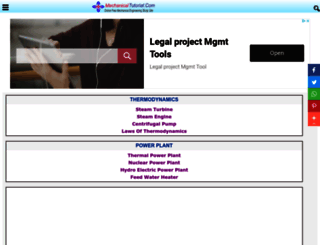Mechanical Engineering and Technology - Mechanicaltutorial
Page Load Speed
3.1 sec in total
First Response
485 ms
Resources Loaded
2.5 sec
Page Rendered
200 ms

About Website
Visit mechanicaltutorial.com now to see the best up-to-date Mechanicaltutorial content for India and also check out these interesting facts you probably never knew about mechanicaltutorial.com
MechanicalTutorial is a free online engineering study site.It provides you important Engineering questions and answer to face interview,various engineering and competitive examination.
Visit mechanicaltutorial.comKey Findings
We analyzed Mechanicaltutorial.com page load time and found that the first response time was 485 ms and then it took 2.7 sec to load all DOM resources and completely render a web page. This is a poor result, as 50% of websites can load faster.